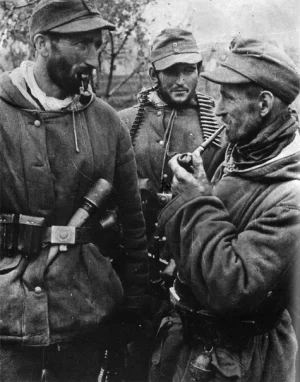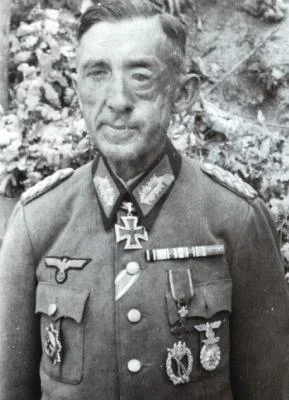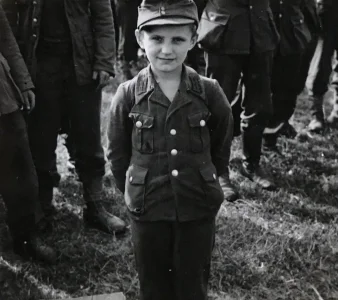Axis troops abandoning the Italian troopship Oceania as she sinks after being torpedoed by HMS Upholder, 18 September 1941
Neptunia and Oceania were two motor passenger liners built in 1931 for the Cosulich Line, one of Italy’s largest shipping companies, which was soon after merged into the new Italian Line. With a tonnage of over 19,000 GRT, they could reach a top speed of 22,5 knots and carry over 1,500 passengers. After Italy’s entry in World War II, both liners were requisitioned and converted into troop transports, sailing for several months between Italy and Libya in fast convoys that delivered tens of thousands of troops to the North African front. On 16 September 1941 the two ships, together with a third, slightly larger liner, Vulcania, sailed from Taranto for Tripoli, escorted by the destroyers Nicoloso Da Recco, Emanuele Pessagno, Antoniotto Usodimare, Antonio Da Noli, and Vincenzo Gioberti.
At 4:15, the famous submarine HMS Upholder, commanded by Malcolm David Wanklyn, attacked the convoy and hit Neptunia and Vulcania with a torpedo each. Neptunia was fatally damaged by the torpedo, that exploded under her keel at the center of the ship, and she finally went down at 6:50. Oceania, on the other hand, seemed salvageable; it was decided to have the destroyers take off the troops, and then to attempt to tow the ship to Tripoli. While this operation was underway, HMS Unbeaten tried to approach to attack Oceania, but was driven off by the destroyers; Upholder, however, was able to attack again at 8:51, hitting Oceania with two more torpedoes. She sank in seven minutes.
There were overall 5,818 troops and crew aboard the two troopships at the time of Upholder’s attack; the massive rescue effort undertaken by the escorting destroyers allowed 5,434 of them to be rescued, whereas 384 perished. Pessagno, a destroyer whose normal complement was about 250 men, crammed aboard 2,083 survivors, Da Recco (the escort leader) rescued 1,302 men; Da Noli, Gioberti and Usodimare picked up 682, 582, and 485 men, respectively. More survivors were rescued by the torpedo boats Clio (163), Perseo (131) and Circe (three) and by floatplanes (three).
Neptunia and Oceania were the largest ships lost on the route between Italy and North Africa.












